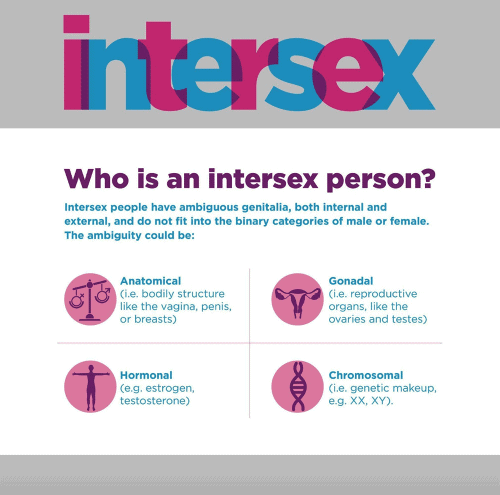Gender and Sexual Orientation Chapter Notes | AP Psychology - Grade 11 PDF Download
Introduction
This chapter explores how sex, gender, and sexual orientation influence human development through a mix of biological, social, and cultural factors. It examines the biological diversity in sex development, the role of gender socialization as a social construct, and the creation of equitable developmental pathways across the lifespan. By understanding these influences, we can better appreciate the diverse pathways of development and challenge limiting stereotypes, fostering environments that support all individuals.
Biological Foundations and Developmental Diversity
Biological development is far more varied than a simple binary model, showing significant overlap and natural diversity. Recognizing this complexity challenges overly deterministic views while acknowledging biology’s limited but real role in development.
Biological Patterns:

- Chromosomal variations extend beyond XX/XY (e.g., XXY, XYY).
- Hormones create a range of physical developmental outcomes.
- Brain research reveals greater within-group than between-group differences.
- Intersex conditions (~1.7% of births) reflect natural biological diversity.
Early Development Insights:
- Motor, cognitive, and language milestones show minimal sex-based differences.
- Brain plasticity highlights the dominance of environmental influences.
- Play preferences are heavily shaped by exposure and encouragement.
- Adult expectations often exaggerate minor differences.
Bidirectional Biology-Behavior Relationship:
- Neuroplasticity allows experiences to shape brain development.
- Hormone levels adjust based on social and environmental factors.
- Gene expression is influenced by external conditions.
- Physical activity and nutrition impact development across sexes.
Gender Socialization as a Social Construct
Gender socialization is a potent force that molds development according to cultural norms, often limiting individual potential. However, children can actively resist stereotypes in supportive settings, and inclusive approaches broaden opportunities for all.Socialization Process:
- Gendered expectations start early (e.g., gender reveal parties, color-coded items).
- Differential treatment shapes behaviors and preferences.
- Reinforcement rewards conformity and discourages deviation.
- Media and educational materials often limit imagination.
- Language patterns frame experiences differently by gender.
Progressive Socialization Strategies:
- Offer diverse role models across gender expressions.
- Encourage exploration beyond traditional gender roles.
- Support children’s authentic interests, regardless of gender norms.
- Challenge stereotypes that restrict development.
- Validate transgender and nonbinary identities.
Research on Socialization Effects:
- Mathematical ability depends on encouragement, not innate differences.
- Leadership skills emerge with support, regardless of gender.
- Emotional expression is similar until socialized otherwise.
- Career aspirations align with exposure to diverse role models.
Creating Equitable Developmental Pathways
Gender influences persist across the lifespan, often creating unequal opportunities. Awareness and intentional changes can foster more equitable developmental paths.
Educational and Cognitive Development:
- Representation in curricula impacts subject engagement and performance.
- Teaching practices can reinforce or dismantle gender expectations.
- Assessments may carry implicit biases affecting outcomes.
- Inclusive STEM approaches boost participation across genders.
- Cooperative learning supports diverse learning styles.
Social-Emotional Development:

- Emotional literacy is fostered across all gender identities.
- Relationship skills are universal, not gender-specific.
- Conflict resolution is a shared skill.
- Mental health support embraces diverse expressions of challenges.
- Community building promotes connection across genders.
Lifespan Development:
- Career paths expand without gender constraints.
- Family roles become more flexible and individualized.
- Caregiving responsibilities are shared equitably.
- Health behaviors improve when freed from gender norms.
- Later-life satisfaction grows with balanced development.
|
35 docs
|
FAQs on Gender and Sexual Orientation Chapter Notes - AP Psychology - Grade 11
| 1. What are the biological foundations of gender and sexual orientation? |  |
| 2. How does gender socialization occur as a social construct? |  |
| 3. What are equitable developmental pathways in relation to gender and sexual orientation? |  |
| 4. How can society reduce gender stereotypes during development? |  |
| 5. What impact does understanding gender and sexual orientation have on psychological well-being? |  |















